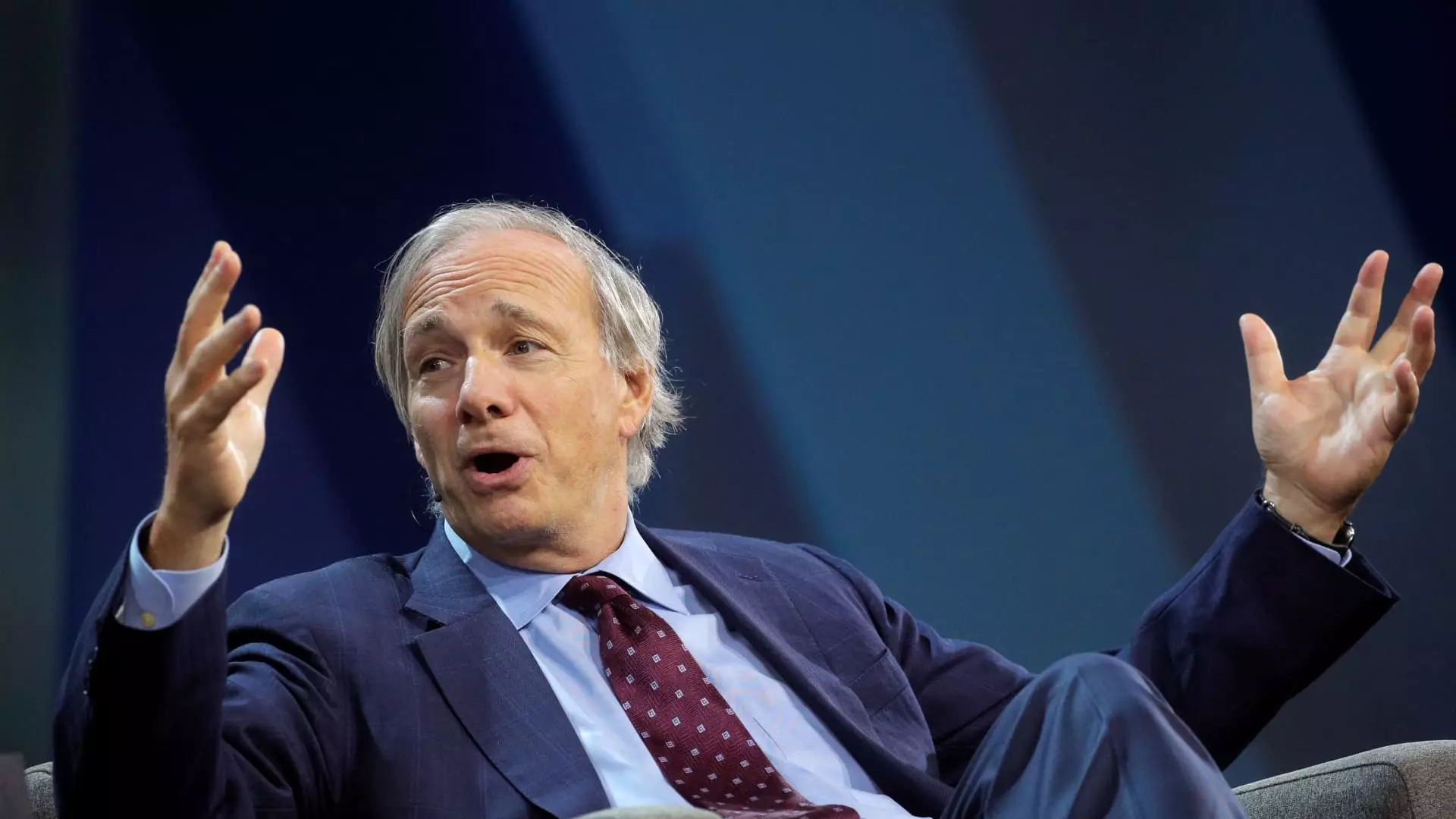The global economy is teetering on a precarious edge as the U.S. Federal Reserve recently made headlines by executing its first interest rate cut since the tumultuous early days of the Covid pandemic. This pivotal decision saw the federal funds rate lowered by 50 basis points, setting it within a range of 4.75% to 5%. However, this reduction is not merely a technical adjustment; it signals deeper challenges the economy faces which billionaire investor Ray Dalio has elucidated with keen insight. In his analysis, Dalio highlights a looming concern that the U.S. economy is mired in an “enormous amount of debt.”
Interest rate adjustments by the Federal Reserve ripple through the economy, directly influencing the cost of borrowing for banks and, consequently, for consumers. This means critical financial products—such as mortgages, auto loans, and credit card rates—are intimately tied to the Fed’s policy decisions. Dalio’s perspective suggests the Federal Reserve is embroiled in a complex balancing act, tasked with maintaining interest rates at levels that are palatable for creditors while ensuring that borrowers aren’t overwhelmed by crippling costs. His commentary serves as a reminder of the challenges inherent in economic policy-making, especially as the U.S. Treasury grapples with sky-high national debt projections.
The deficit, which recently approached $2 trillion for the year, underscores the complications birthed by excessive government spending—over $1 trillion allocated to interest on the national debt of approximately $35.3 trillion in 2023 alone. These figures not only paint a picture of fiscal strain but also raise questions about the sustainability of such debt levels moving forward. Dalio’s articulation of these issues reflects a broader recognition that reliance on debt is unsustainable long-term, likening the scenario to precarious tipping points witnessed in economic history.
Dalio posits that the intersection of debt, money supply, and economic cycles constitutes a fundamental component of today’s financial landscape. He notes, “the enormous amount of debt that is being created by governments and monetized by central banks” is historically unprecedented. This proliferation of debt is largely a consequence of the stimulus measures deployed during the pandemic, aimed at averting an economic collapse. As governments across the globe incurred unprecedented debt burdens, the subsequent normalization of high levels of debt raises critical inquiries about the validity of debt management strategies.
While some observers await a potential credit event that could threaten the stability of financial markets, Dalio suggests he does not foresee such an immediate crisis. Instead, he alludes to an impending depreciation of the debt’s value, exacerbated by persistently low real interest rates. This indicates the complexity in determining a forthcoming correction, as the economy grapples with an extensive amount of debt set to be refinanced and newly created obligations lined up by government action.
The Politics of Debt and Economic Policy
Political considerations also weigh heavily on this financial dialogue. Dalio expresses skepticism regarding the commitment of key political figures, such as former President Donald Trump and Vice President Kamala Harris, towards prioritizing debt sustainability. With elections on the horizon, there is a pressing need for effective and responsible governance that addresses these debt burdens. The implication is that regardless of the electoral outcome, the trend towards debt monetization—a strategy already in play—will likely continue. Dalio draws parallels to Japan, which exhibited extended periods of low-interest rates leading to devaluation of its currency and bonds.
This international lens offers insight into the risk of similar trends manifesting in the U.S., where the Federal Reserve may be forced into further interventions. Such actions could be viewed as symptomatic of deeper structural problems that necessitate urgent and comprehensive reform in fiscal policies rather than temporary relief measures.
Looking Ahead: Market Repercussions
As the debate around debt dynamics progresses, one crucial question remains: What happens to market conditions when debt exceeds the capacity for absorption by buyers? According to Dalio, insufficient demand for debt may compel the Federal Reserve to step in, inciting concern. His forecasts suggest that a downturn could mirror scenarios reminiscent of the 1970s or even periods throughout the 1930s to 1945—eras marred by economic distress and instability.
In this complex interplay of debt, interest rates, and governance, the role of central banks becomes pivotal. Dalio’s warnings about the ramifications of persistent debt oversupply reflect an urgent call for vigilance, encouraging stakeholders to brace for uncertainty ahead. As the economy navigates these unpredictable waters, the balance between fostering growth while managing debt levels could dictate the socio-economic landscape for years to come, underscoring the need for astute economic stewardship in the face of unprecedented challenges.

Leave a Reply